Bean bags have been around for a long time, but they’re not just a punchline from the 90s anymore! Let’s discuss the history of bean bags.
Bean bags, which were formerly only considered to be hippy furniture or children’s toys, are now offered in a variety of sizes, shapes, fabrics, and colors.
They can be found, on a boat, on the pool deck, indoors or outdoors, in resorts, schools, behind your office desk, at homes, restaurants, movies, and much more.
But where did they come from? Since when they are around us? Where was their origin? How did they develop and upgrade with the passage of time?
In this blog article, we’ll answer all these questions as we will talk about the history of bean bags and explore how they gained so much popularity. Stay tuned.
- What Was The Bean Bag Chair Originally Called?
- What Are Bean Bags?
- History of Bean Bags – Discussed in Detail
- Ancient Greek History of Bean Bags
- Chinese History of Bean Bags
- Evolution of Bean Bags
- The Sacco
- The 1970s Era – When Bean Bags Were Popular
- The 1980s-1990s – Bean Bags Earned Their Essential Resurrection
- Recalling and Redesigning of Bean Bags
- Bean Bags of Present Times
- First Ever Bean Bag Chair Designers
- Old and New Uses of Bean Bags
- History of Fillings for Bean Bag Chairs
- Bean Bag Covers
- Types of Bean Bags
- FAQs – Frequently Asked Questions
- Conclusion
what was the bean bag chair originally called?
The bean bag chair originally was called Saco. It was named by a team of three architects from Italy, Piero Gatti, Franco Teodoro, and Cesare Paolini. The designers were asked to name the chair that was catchy yet easily memorizable by the masses.
In the present times, we call this masterpiece of furniture, a bean bag or bean bag chair. Ahead, we will talk about what they are and what they look like in the present times, and how they have upgraded themselves with the passage of time.
What Are Bean Bags?
Bean bags are one of the most versatile pieces of furniture you can own. It is a large bag, generally made up of fabric, filled with beans, polystyrene beads, or other bean bag filling materials. They can be used as a chair, footrest, or even a makeshift bed.
Believe it or not, bean bags have been around for centuries. The earliest known bean bag was found in an Egyptian tomb and is thought to date back to the 14th century. These early bean bags were filled with dried beans or rice and were used as pillows and cushions.
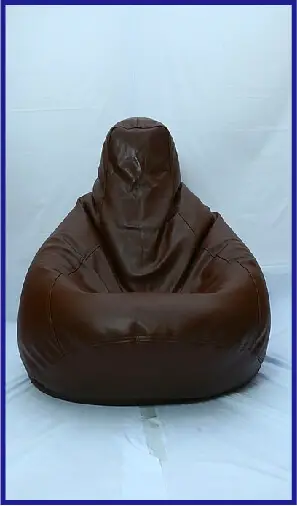
Bean bags gained popularity in the West in the 1970s. These days, they are usually made of nylon or polyester and filled with Styrofoam pellets. They come in all sorts of shapes and sizes and can be used for a variety of purposes.
So next time you’re looking for a piece of furniture that’s versatile, comfortable, and stylish, consider a bean bag.
History of Bean Bags – Discussed in Detail
Bean bags have been a staple of American homes for decades. Intended initially as furniture for schools and offices, bean bags are now used by everyone from couch potatoes to professional athletes to improve their comfort and posture while watching TV or playing video games.
Today, bean bags are found in homes and offices around the world. They have become such a common fixture in the landscape that many people don’t think much about where the name “bean bag” comes from.
Ancient Greek History of Bean Bags
The bean bag was first used in Ancient Greece as a form of traditional seating for athletes and spectators. the philosopher and statesman Thales discovered that beans could be inflated to provide a cushion for weary travelers.
The bag was first mass-produced in the United States in the 1920s and introduced to the public in the early 1900s at the Lewisometric Felt and Canvas Company in New York. The bean bag was first used by the military for softening impact in field artillery. The bean bag was then used for other purposes, such as for exercise, in health clubs, and relaxation.
Chinese History of Bean Bags
Tai Chi was taught using bean bags in ancient China. It is a kind of martial arts that originated in the 12th century. In Tai Chi, you learn the method to control your movements and breathing, develop internal energy, mindfulness, and serenity, and integrate your mind with your body. Tai Chi aims to cultivate the flow of life energy (qi) throughout your body so that its flow is powerful and smooth.
Tai chi masters began using small pouches stuffed with sand, pebbles, or dried beans at some point in history. Their slow, graceful movements helped them focus on their inner power by striking the bags hanging in the air with various parts of their bodies.
An old video from 1937 shows a tai chi expert kicking bean bags. It is believed that this is the origin of the game “Footbag” (also known as “Hacky Sack”). The game is still played in the present times.
Evolution of Bean Bags
You might be surprised to learn that the first bean bag chair wasn’t actually created until the 1960s, given how frequently bean bags were used for leisure activities in ancient times. You can thank the persons listed ahead for creating such a comfortable piece of furniture as well as the process that led to its creation.
A man named William Roger Dean (known as Roger Dean) was the mastermind behind the success of the “Sea Urchin Chair”. It was completed in 1967 and he filed a patent for it in 1968. Roger worked for the Royal College of Art and is an English artist, designer, and publisher.
The sea urchin chair is seen as a forerunner to the bean bags. It contained blocks of foam for cushioning instead of beads. Victoria and Albert Museum in London now has this chair in its permanent collection.
The Sea Urchin Chair by Roger Dean “resides in a chair in the form of spheroidal or a ball-like structure built of deformable material having a resilience such that it would deform under pressure but is self-supporting while it is at rest” according to the Patent.
The drawings below by Roger Dean show what a sea urchin chair, known as a “petal-shaped”, looks like:
In this patent, figure 1 is a perspective view of the sea urchin chair according to one embodiment of the invention. It illustrates the arrangement of the panel and dome sections of the chair device.
Figure 2 in the patent is a vertical section of the sea urchin chair of figure 1 when at rest. The figure is attached below.
The Sacco
The “Sacco” is one of the first bean bag chairs that was created. It was a leather pear-shaped chair filled with Styrofoam beans that are still produced today.
The Sacco was created in the years 1967–1968 and was introduced a year after the Sea Urchin, in 1969.
It was created in collaboration with the Italian firm Zanotta Design by three architects from Italy, Franco Teodoro, Cesare Paolini, and Piero Gatti. The designers were requested to design a distinctive chair that was comfy, aesthetically beautiful, and practical to maintain.
They were producing the chair during the so-called “Italian Modernism movement” era. This era began after World War II and was marked by the use of new production techniques, technologies, and materials.
As a result, they were able to use novel materials, like plastics such as polystyrene at affordable costs for customers. Thus, the Sacco was created. This is a chair without a defined shape.
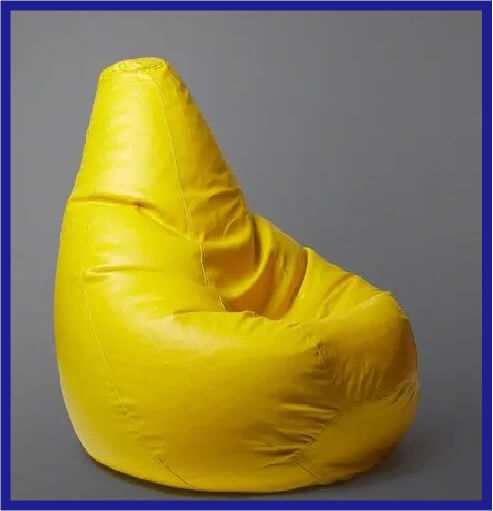
Non-conforming homes and Hippies were Sacco’s target market because it was intended to be a radical piece of “anti-design” to criticize a “non-chair” or any conservative tastes to battle conforming tastes.
It violated some of these design requirements in certain ways. For example, it lacked shape, but when filled with bean bag fillings, the shell had the shape of a pear. Then, it was constructed of leather instead of plastic. Plastic was the material that Italian designers took in their pride. The Sacco was made to be proud of its Italian heritage.
However, Sacco’s distinctive design brought users closer to the ground and allowed them to lounge around in casual positions. It matched the sociable, laid-back age, and non-conforming identities. As a result, it appealed to the hippy market in Europe and America.
It gained overnight success at a lightening fast speed and gained the trust of the market. The well-known department retailer Macy’s instantly placed an order for 10,000 pieces without any hesitation whatsoever. The Sacco remained a popular symbol in the 1970s.
The 1970s Era – When Bean Bags Were Popular
Bean bags were immensely promoted and at their most liked position in the 1970s. They were made by a considerable amount of companies around the world and sold in stores everywhere.
Walking into any first-world home and seeing a bean bag somewhere in the home was practically a guarantee back at that time. History of bean bags: Although many of these chairs were still made of Sacco cloth, numerous chairs were also made by other manufacturers using nylon or even more inexpensive polyester.
The expanded polystyrene (EPS) beans that we use today were introduced to the market throughout the 1970s along with a wide variety of other bean bag filling alternatives.
At the time, bright and vivid colors and patterns of bean bags were in style, but most chairs still had a spherical shape.
Because bean bag chairs were so pleasant, not only did they gain popularity among buyers but also with professional interior decorators. It was due to their lightweight and adaptability traits. The history of bean bags is interesting no?
Doctors were recommending them for patients to help them recover from back surgery. In addition to that, therapists and caregivers started noticing that they were helping kids suffering from sensory-integration issues.
The 1980s-1990s – Bean Bags Earned Their Essential Resurrection
Over the course of nearly 20 years, bean bags experienced some turbulence on their way to the top. Particularly in the 1980s, as numerous new forms of furniture entered the market, bean bags’ popularity fell dramatically. However, some businesses continued to manufacture them, especially the low-cost bean bag options.
The bean bag chair underwent a revolution in the 1990s when it had a resurgence in popularity. Along with its conventional spherical shape, it started to be launched on the market in a variety of shapes, sizes, and types, including beds, sofas, and recliners.
But there were some downsides to these seating options as well. Unfortunately, as a result of these dangerous products, numerous kids suffered injuries. Some even passed away from suffocation after climbing inside bean bags and breathing in the bean bag stuffing.
Recalling and Redesigning of Bean Bags
Due to rules put in place as a result of the deaths of children during the previous ten years, all new bean bags created were made more childproof. European, Australian, and American companies began adding safety features like childproof zippers that would prevent children from opening them and crawling inside.
As of March 1995, bean bag safety became a law. Any bean bag sold after that date is manufactured in such a way that children can no longer get inside them and inhale the beans. This law came into existence as the history of bean bags after recalling and redesigning over 12,000,000 bean bag chairs due to more injuries and death from inhalation of bean bag fillings.
Bean Bags of Present Times
Bean bags are enjoying significant popularity nowadays and are just as safe as any other sort of furniture. There are now a huge variety of sizes, shapes, and designs of bean bag chairs available.
With softer, frequently adjustable bean bag covers and more durable fillings than the foam beads, we can all probably remember placing them into the living room carpet, and bean bags.
They now let you enjoy a more contemporary appearance of your home’s interior. The modern designs are more comfortable than ever, which is a great plus. Furthermore, they blend in well with our contemporary aesthetics and environments.
Beanbag chairs come in a wide variety of types. They can be used indoors or outdoors and may replicate the shapes of conventional loungers, chairs, and sofas. Additionally, these playful pieces of furniture integrated bean bag fillers that are stronger and even available for use as pet beds.
First Ever Bean Bag Chair Designers
The earliest bean bags were designed by three Italian architects. Italian masterminds are behind the origin of the bean bag chair. These designers in the history of bean bags/ bean bag chairs were:
- Piero Gatti
- Cesare Paolini
- Franco Teodoro
They belonged to an Italian company called Zanotta Design. They created the Saco bean bag chair. This seating option came into existence on the design scene in the late 1960s when these Italian designers crafted the first ever beanbag chair. It was very successful and spread like wildfire throughout Europe, North America, and Asia.
Old and New Uses of Bean Bags
Over time, the beanbags evolved, becoming soft and comfortable for lounging by the fire and later, for games and other activities. Today, beanbags are still used for a variety of purposes, from relaxation and comfort to exercise and games.
They have also become a popular seating option for people who have difficulty sitting on traditional chairs.
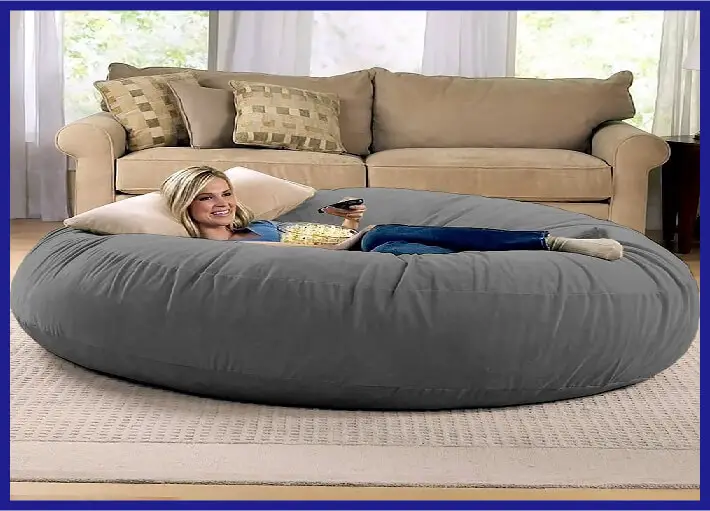
Bean bags are also a common form of seating for children, adults, and even pets. This versatile seating option is usually used for reading, playing games, watching television, or resting.
History of Fillings for Bean Bag Chairs
The earliest bean bags were made from felt, which is a soft material that can be easily shaped and is inexpensive to produce. With time, other materials were used for bean bag filling, such as wood chips and sawdust.
Today, bean bag filling is usually made of synthetic fibers such as polyester, which provides comfort and durability. Most bean bag filling is also dust free to keep it clean and free of allergens.
Bean Bag Covers
Bean bags of the 21st century offer many cover choices, such as twill, suede or microsuede, leather, and fur. These high-quality foam-filled chairs are more stylish, making consumers more likely to show them off.
The modern bean bag chair has graduated from the kids’ room and the dorm room to the living room and home theater. At the same time, foam-filled bean bag chairs with quality covers are more durable.
Types of Bean Bags
There are many types of bean bags. Bean bag manufacturers produce a variety of options in different shapes and sizes for use in homes and on the go. Regular bean bags measure between twelve to eighteen inches in diameter and two to three feet in length.
They are often filled with a soft material, such as shredded foam or synthetic fiber, to provide comfort and support when used as a seating option. Some bean bag manufacturers fill their bean bags with sand or other small gravel to provide additional texture and support.
FAQs – Frequently Asked Questions
Who Invented the Bean Bags?
The ancient Egyptians invented the bean bag near 2000 B.C. as recorded by a historian. For thousands of years, Egyptians used small leather pouches filled with dried beans or pebbles. They also used them to play recreational games.
What Were Old Bean Bags Filled With?
Old beanbags were filled with pebbles or dried beans. Some of the first jugglers in history used them as their tools. Native Americans in the Great Plains of the United States also used bean bags for various purposes.
Why Was the Bean Bag Chair Invented?
The bean bag chair was invented so that it would catch the attention of a young group of people that wanted counter-culture and new materials. In 1968, Sacco commissioned Piero Gatti, Cesare Paolini, and Franco Teodoro to design a new type of chair.
When Was the Bean Bag Chair Invented?
Three Italian designs invented the first bean bag chair in 1968, fifty-four years ago, for a company called Sacco. There have been a lot of changes since the mass production of the very first bean bag.
In the present times, people have realized that foam-filled chairs are much more comfortable to sit on than conventional chairs.
Why Is It Called Bean Bag Chair?
It is called a bean bag chair due to its adjustability and filler material, beans, or beads. The Sacco chair, also known as simply a bean bag or beanbag, beanbag chair, bean bag chair, is a large size fabric bag.
It is generally filled with bean bag fillings such as polystyrene beans. This chair was designed by Franco Teodoro, Piero Gatti, and Cesare Paolini. “Sacco” is the Italian word for “bag, sack.”
Conclusion
We have covered almost everything about the history of bean bags. Bean bags have been around us for a very long time and that too for the right reasons. They are comfortable, cozy, and fun to sit on.
Since fifty-four years of their invention, they have been developed a lot and now we have them in their latest upgraded form. You may bring a bean bag chair to your home to add a funky touch to the interior of your home.

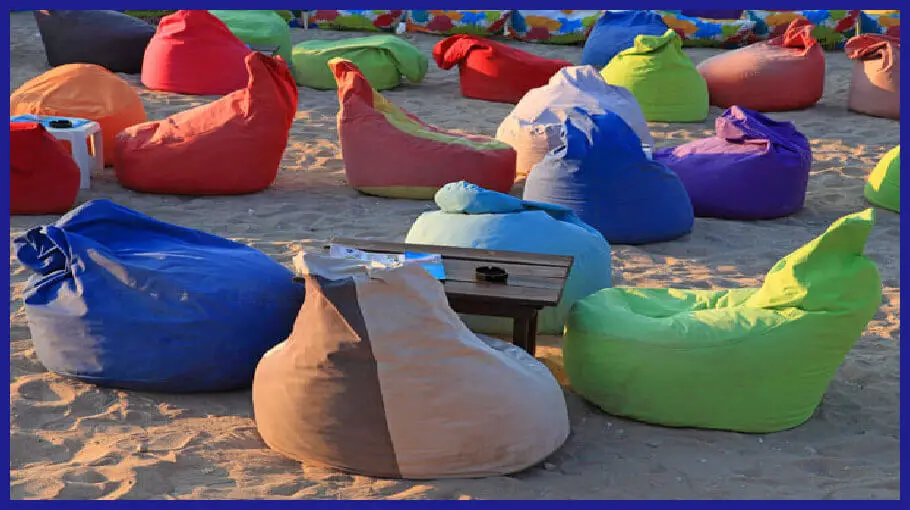


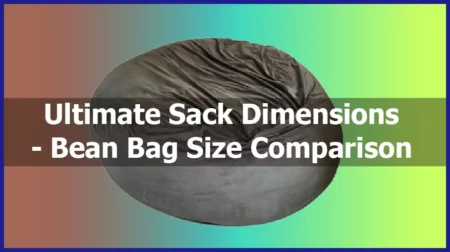
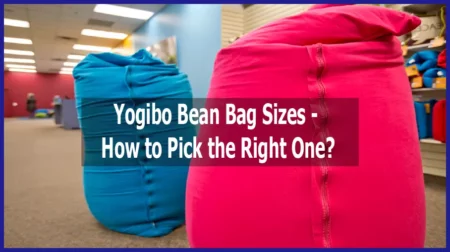

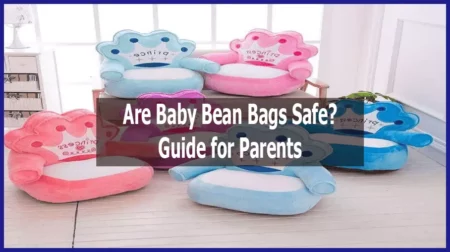
![Are Lovesac Bean Bags Worth It? [Cost vs Comfort Analysis]](https://www.probeanbag.com/wp-content/uploads/2023/09/are-lovesacs-worth-it-450x252.webp)

![Are Bean Bags Safe for Dogs? [Expert Answer]](https://www.probeanbag.com/wp-content/uploads/2023/08/are-bean-bags-safe-for-dogs-450x252.webp)